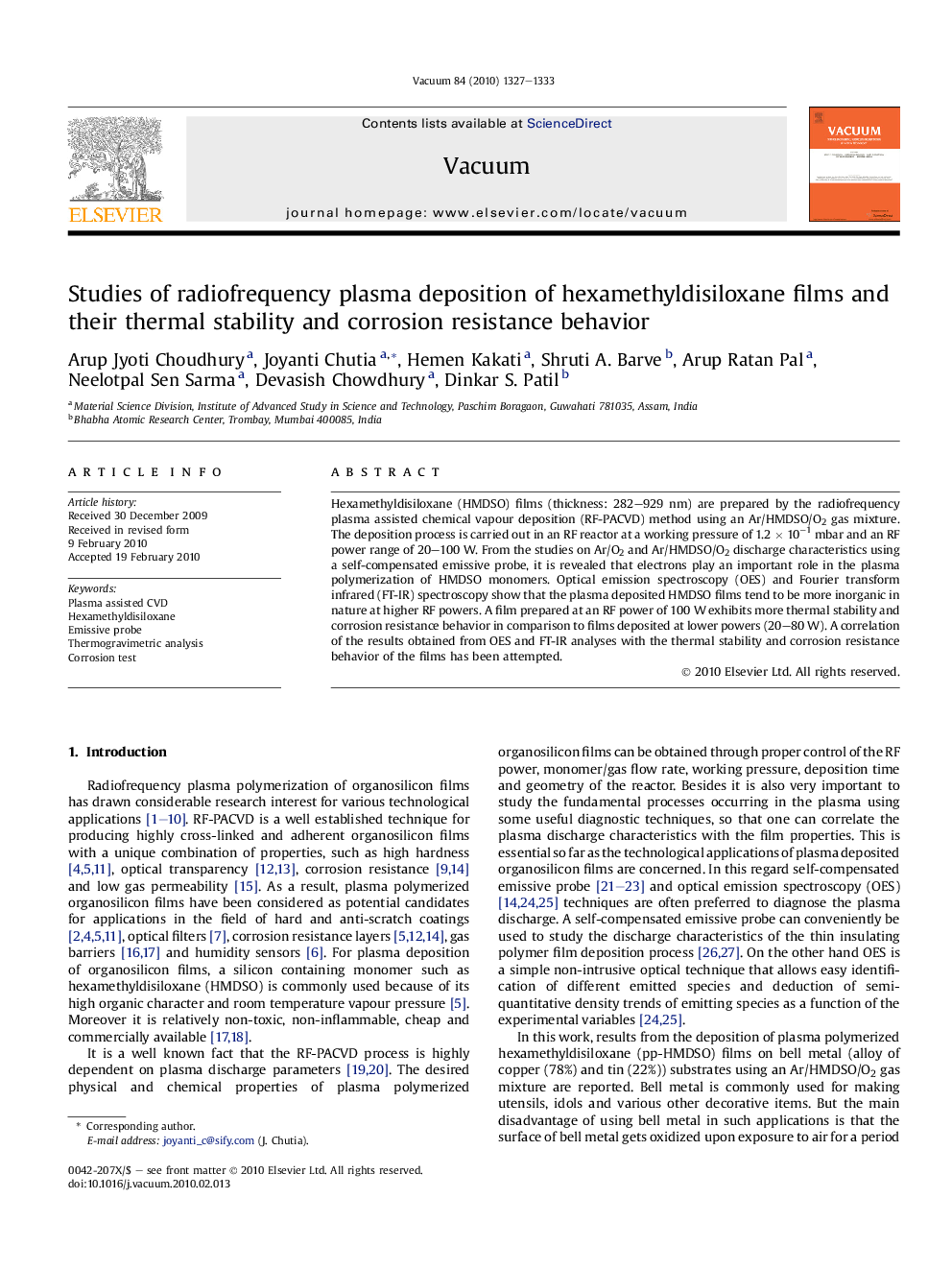| Article ID | Journal | Published Year | Pages | File Type |
|---|---|---|---|---|
| 1689019 | Vacuum | 2010 | 7 Pages |
Hexamethyldisiloxane (HMDSO) films (thickness: 282–929 nm) are prepared by the radiofrequency plasma assisted chemical vapour deposition (RF-PACVD) method using an Ar/HMDSO/O2 gas mixture. The deposition process is carried out in an RF reactor at a working pressure of 1.2 × 10−1 mbar and an RF power range of 20–100 W. From the studies on Ar/O2 and Ar/HMDSO/O2 discharge characteristics using a self-compensated emissive probe, it is revealed that electrons play an important role in the plasma polymerization of HMDSO monomers. Optical emission spectroscopy (OES) and Fourier transform infrared (FT-IR) spectroscopy show that the plasma deposited HMDSO films tend to be more inorganic in nature at higher RF powers. A film prepared at an RF power of 100 W exhibits more thermal stability and corrosion resistance behavior in comparison to films deposited at lower powers (20–80 W). A correlation of the results obtained from OES and FT-IR analyses with the thermal stability and corrosion resistance behavior of the films has been attempted.
